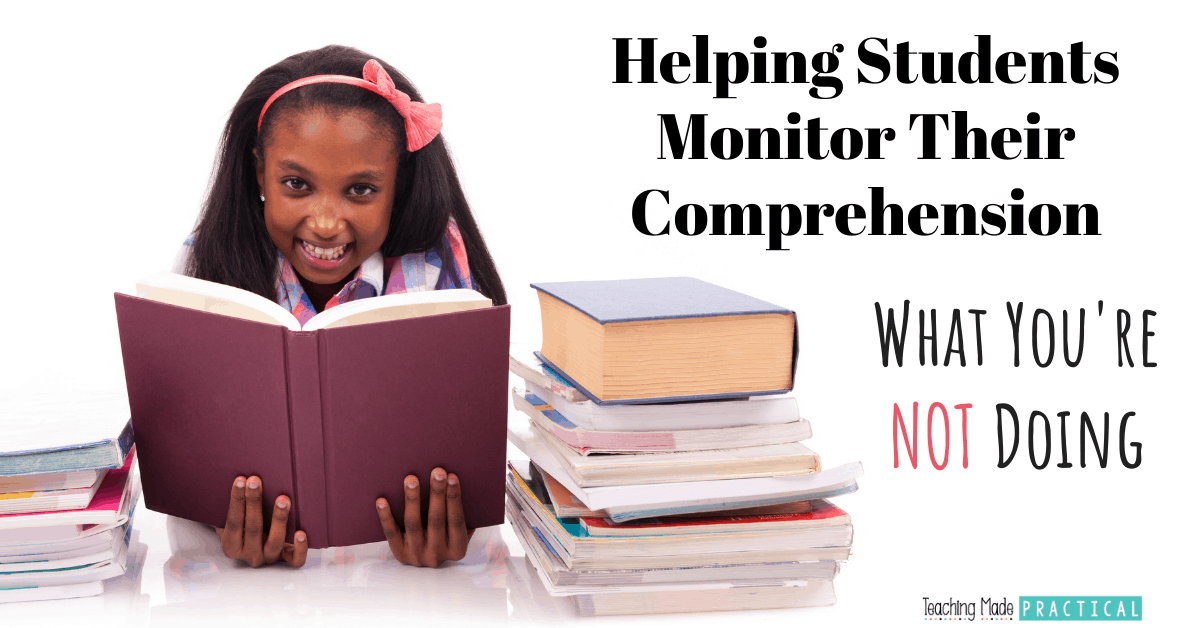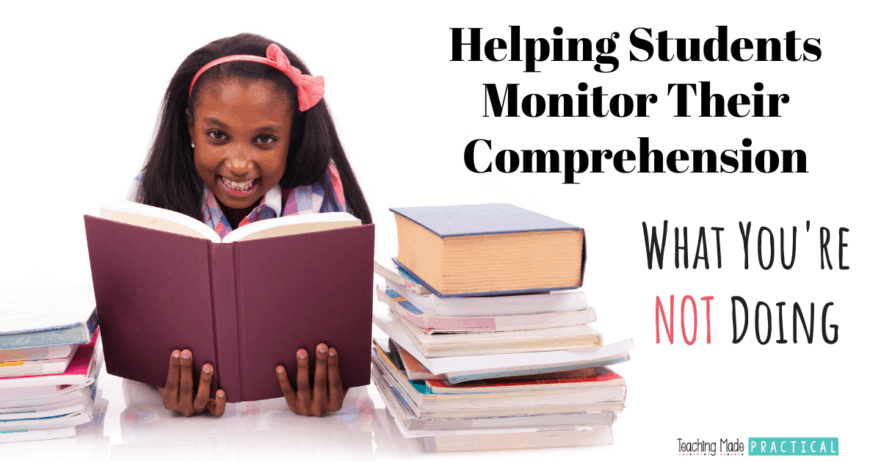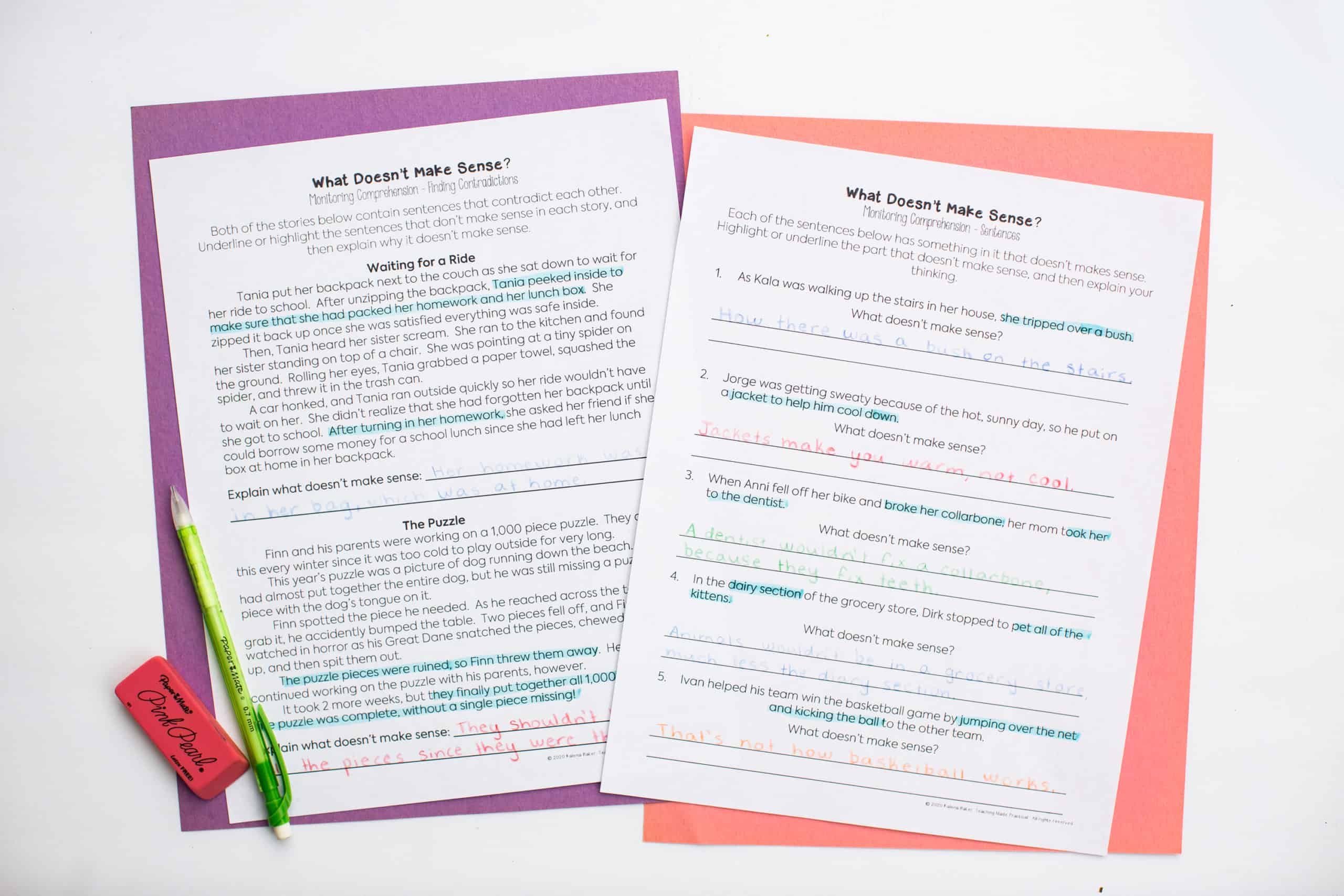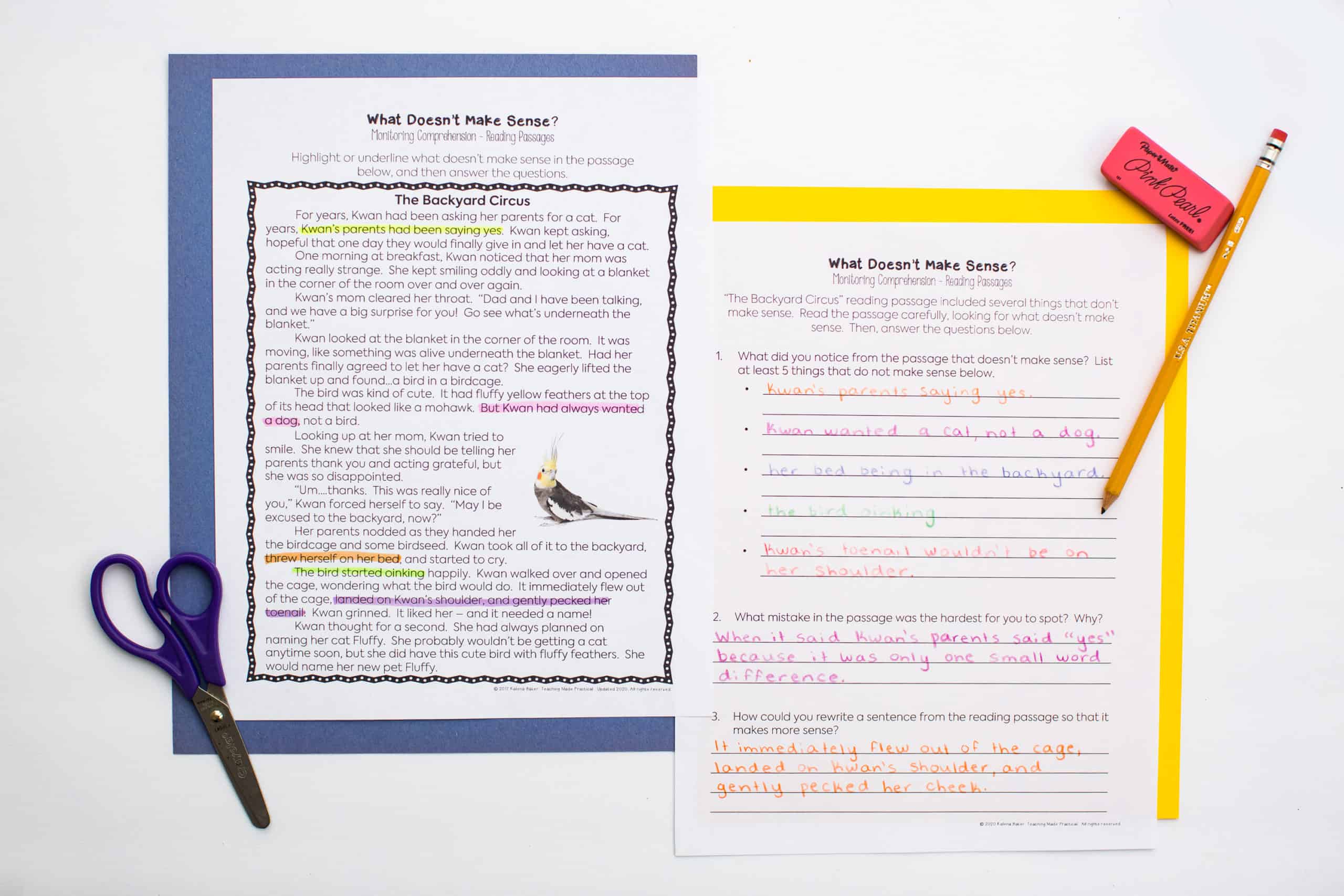
Common Self-Monitoring Strategies That Don't Always Work
We've all experienced it. We've listened to a student read a passage quickly and with perfect fluency. We've patted ourselves on the back for our teaching skills. And then we've asked a simple comprehension question, only to get a blank stare in return. 🤦♀️
A lot of comprehension practice in 3rd, 4th, and 5th grade focuses on teaching students to think about specific skills - main idea, character traits, theme, point of view, comparing and contrasting, etc. This is essential, but doesn't necessarily help students monitor their own comprehension.
Other monitoring comprehension activities focus on teaching students certain strategies to help them monitor comprehension - things like rereading, asking questions, connecting the text to themselves, etc. This is helpful, but sometimes can feel contrived and unauthentic.
To help students practice strategies that help them monitor their comprehension in a more meaningful way, we need to provide authentic opportunities for self-monitoring.
Using the Right Texts to Help Students Monitor Their Comprehension
As teachers, we generally expose students to time-tested literature and reading passages that are accurate and informative. This, of course, is necessary and important. But it can also give students the mistaken impression that all print is reliable and trustworthy.
In the real world, students will come across all sorts of texts and media. Some of it will be biased. Some of it will contradict itself. Some of it will be inaccurate. Some of it will be confusing. Some of it is simply not to be trusted.
It's essential that we give students a chance to practice reading texts with intentional errors so that they can practice thinking about texts in a more critical way. Using texts with errors is one of the BEST ways to give students a chance to practice thinking about what they are reading. It also provides crucial real world comprehension practice.
When students are reading texts with error, the monitoring comprehension strategies that we teach will be much more relevant and useful.
Of course, it's not at all easy to find upper elementary appropriate texts that have errors for them to find. That's why I made made this Monitoring Comprehension Resource - to make it easy for you to provide authentic monitoring comprehension practice.
Ideas for Adding Intentional Mistakes For Self-Monitoring Comprehension Practice
Providing texts with intentional mistakes is a great way to see how well upper elementary students are monitoring their comprehension. It takes a little extra time to change up your texts, but it will be well with your effort.
Consider changing up some of your texts by:
- adding statements that contradict each other
- changing the solution so that it doesn't make sense with the problem
- changing an effect so that it doesn't make sense with the cause
- adding words that don't make sense with the context
- including a setting that doesn't make sense
- changing up the sequencing of a story or events so that they don't make sense
- including a title or heading that doesn't make sense with the text
- including a reaction or behavior from a character that doesn't make sense
Students will love catching these "mistakes" as they read - and it is a great way to assess how well students are self-monitoring their comprehension! And as an extension activity, you could have students rewrite a text so that it does make sense.
No Prep Activities for Monitoring Comprehesion
This is a fun and rigorous activity, but it does require a bit of preparation and planning ahead of time. If you're looking for a no prep option, check out this Monitoring Comprehension Activities and Reading Passages for Practice Resource.
This resource starts simple, asking students to figure out what doesn't make sense in sentences. Then, it moves on to short stories and paragraphs before having students read longer passages with multiple intentional mistakes.
The different levels make it easy for you to differentiate. Or, use the different levels as scaffolding, having students start with the sentences and work their way up to longer passages.
As students complete the activities, they will have to think about setting, problem/solution, cause/effect, contradictions, context, titles/headings, and more.
Never Stress Over Sub Plans Again!

Make copies, find a fiction book, and you'll be ready for any emergency that comes your way!




Comments 2
I have lifetime access and am trying to pull the monitoring comprehension resources, but it keeps redirecting me to the tpt store. Is there somewhere else I should be looking for it? Thanks.
Denise
Author
I just emailed you with info about finding the resource!